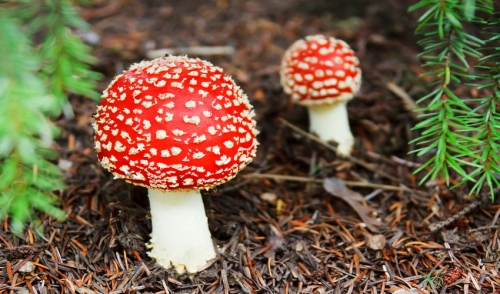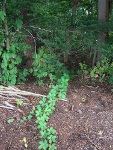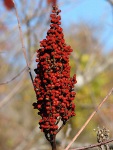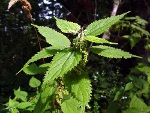
Top 5 Plants to Avoid While Camping
This is the time of year when nature is blooming all around us, and when the beauty of plant and animal life is an enticing alternative to the pressures and chaos of juggling a 21st century schedule. However, before you thrust yourself into the hands of Mother Nature, whose favorite parenting skill is natural consequences, you may want to arm yourself with an understanding of some simple dangers of camping in wooded areas. The last things you want is to have your serene camping trip end up as a trip to the hospital. There are some plants that, although may look harmless, can cause severe discomfort when come into contact with. If you aren't looking for them, you may miss them, so it may be a good idea to memorize the leaf characteristics or have pictures of these plants on hand as a reference. Poison Ivy is generally found throughout North America, predominantly east of the Rocky Mountains. This plants tends to grow in wooded areas, open fields, as vines and underbrush, and is not often found at altitudes greater than 5,000 feet. Poison Ivy is a shrub or vine that has groupings of three, jagged, almond shaped leaves. There are reddish hairs growing from the vine. They usually grow no more than ten inches tall. If you make contact with Poison Ivy, you may develop itchy, red inflammation and in more severe cases, blisters. Calamine lotion can be used to mitigate these negative effects.
Poison Ivy is generally found throughout North America, predominantly east of the Rocky Mountains. This plants tends to grow in wooded areas, open fields, as vines and underbrush, and is not often found at altitudes greater than 5,000 feet. Poison Ivy is a shrub or vine that has groupings of three, jagged, almond shaped leaves. There are reddish hairs growing from the vine. They usually grow no more than ten inches tall. If you make contact with Poison Ivy, you may develop itchy, red inflammation and in more severe cases, blisters. Calamine lotion can be used to mitigate these negative effects. Poison Oak is typically found on the east coast of North America, in the mid-west, Western Oklahoma, Texas, Kansas, Nevada, Oregon, and Washington. Poison Oak dwells most often in sandy soils, growing in thickets, wooded regions, and sandy fields. It has three to five oval leaves with deep, serrated edges. It bears a fuzzy fruit on the branches and leaves can sometimes appear to be wrinkled. The symptoms and treatment of Poison Oak is similar to Poison Ivy.
Poison Oak is typically found on the east coast of North America, in the mid-west, Western Oklahoma, Texas, Kansas, Nevada, Oregon, and Washington. Poison Oak dwells most often in sandy soils, growing in thickets, wooded regions, and sandy fields. It has three to five oval leaves with deep, serrated edges. It bears a fuzzy fruit on the branches and leaves can sometimes appear to be wrinkled. The symptoms and treatment of Poison Oak is similar to Poison Ivy.
 Poison Sumac is the less common than the previous two plants, but is much more toxic. Poison Sumac can be found in moist, swampy areas in the eastern Unites States and Canada. It is a small tree with blue-green leaves which are oblong in shape with contrasting red veins. They possess grey or crème colored berries. Contact with this plant will lead to painful irritations and eruptions. Immediately wash your skin with warm, soapy water. If you wait more than 15 minutes, the oils in the plant will bind to your skin and augment the severity of the reaction.
Poison Sumac is the less common than the previous two plants, but is much more toxic. Poison Sumac can be found in moist, swampy areas in the eastern Unites States and Canada. It is a small tree with blue-green leaves which are oblong in shape with contrasting red veins. They possess grey or crème colored berries. Contact with this plant will lead to painful irritations and eruptions. Immediately wash your skin with warm, soapy water. If you wait more than 15 minutes, the oils in the plant will bind to your skin and augment the severity of the reaction.
 Stinging Nettles are highly poisonous, but they possess painful hair-like barbs on the leaves and stems which release a small amount of irritating chemicals when touched. The leaves of the Stinging Nettles are thin, jagged and green. If contact is made, immediately wash your skin and apply calamine lotion.
Stinging Nettles are highly poisonous, but they possess painful hair-like barbs on the leaves and stems which release a small amount of irritating chemicals when touched. The leaves of the Stinging Nettles are thin, jagged and green. If contact is made, immediately wash your skin and apply calamine lotion.
Finally, a nonspecific item of note; if you come into contact with any unknown, milky saps, it is important to immediately wash your skin. 40% of milky saps can do skin damage, and some can even enter the bloodstream and then the lymph system. The best way to avoid these problems is to apply an acid the exposed area, such as vinegar, or even urine if it is necessary.
